Manish Gawali
SetLexSem Challenge: Using Set Operations to Evaluate the Lexical and Semantic Robustness of Language Models
Nov 11, 2024Abstract:Set theory is foundational to mathematics and, when sets are finite, to reasoning about the world. An intelligent system should perform set operations consistently, regardless of superficial variations in the operands. Initially designed for semantically-oriented NLP tasks, large language models (LLMs) are now being evaluated on algorithmic tasks. Because sets are comprised of arbitrary symbols (e.g. numbers, words), they provide an opportunity to test, systematically, the invariance of LLMs' algorithmic abilities under simple lexical or semantic variations. To this end, we present the SetLexSem Challenge, a synthetic benchmark that evaluates the performance of LLMs on set operations. SetLexSem assesses the robustness of LLMs' instruction-following abilities under various conditions, focusing on the set operations and the nature and construction of the set members. Evaluating seven LLMs with SetLexSem, we find that they exhibit poor robustness to variation in both operation and operands. We show -- via the framework's systematic sampling of set members along lexical and semantic dimensions -- that LLMs are not only not robust to variation along these dimensions but demonstrate unique failure modes in particular, easy-to-create semantic groupings of "deceptive" sets. We find that rigorously measuring language model robustness to variation in frequency and length is challenging and present an analysis that measures them independently. The code for reproducing the results of this paper, and for generating the SetLexSem Challenge dataset, is available at \href{https://github.com/amazon-science/SetLexSem-Challenge}{https://github.com/amazon-science/SetLexSem-Challenge}.
Application of Federated Learning in Building a Robust COVID-19 Chest X-ray Classification Model
Apr 22, 2022
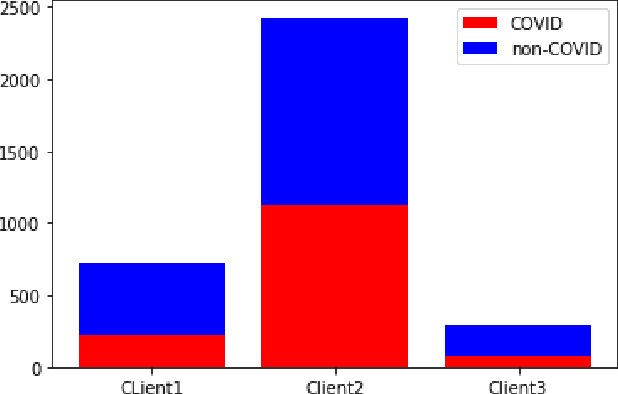
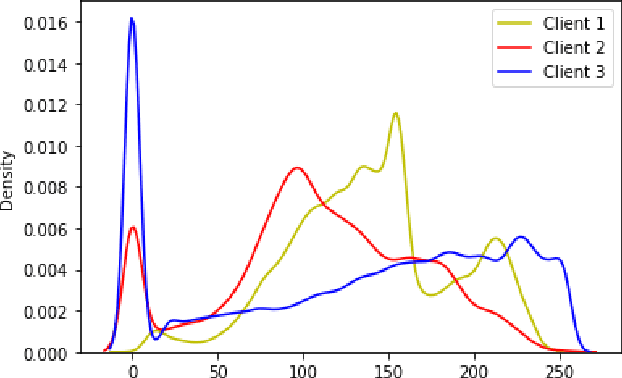

Abstract:While developing artificial intelligence (AI)-based algorithms to solve problems, the amount of data plays a pivotal role - large amount of data helps the researchers and engineers to develop robust AI algorithms. In the case of building AI-based models for problems related to medical imaging, these data need to be transferred from the medical institutions where they were acquired to the organizations developing the algorithms. This movement of data involves time-consuming formalities like complying with HIPAA, GDPR, etc.There is also a risk of patients' private data getting leaked, compromising their confidentiality. One solution to these problems is using the Federated Learning framework. Federated Learning (FL) helps AI models to generalize better and create a robust AI model by using data from different sources having different distributions and data characteristics without moving all the data to a central server. In our paper, we apply the FL framework for training a deep learning model to solve a binary classification problem of predicting the presence or absence of COVID-19. We took three different sources of data and trained individual models on each source. Then we trained an FL model on the complete data and compared all the model performances. We demonstrated that the FL model performs better than the individual models. Moreover, the FL model performed at par with the model trained on all the data combined at a central server. Thus Federated Learning leads to generalized AI models without the cost of data transfer and regulatory overhead.
Vulnerability Due to Training Order in Split Learning
Mar 26, 2021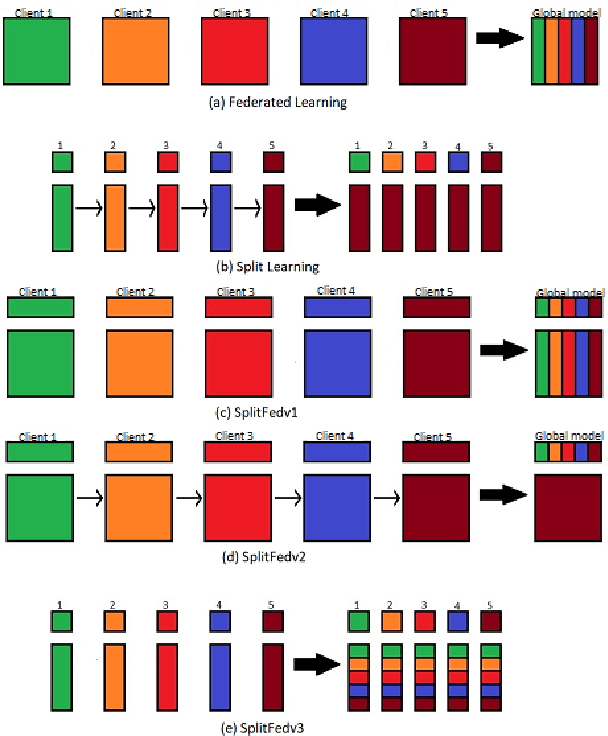

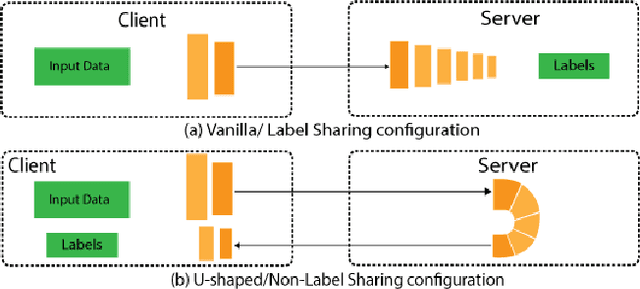

Abstract:Split learning (SL) is a privacy-preserving distributed deep learning method used to train a collaborative model without the need for sharing of patient's raw data between clients. In split learning, an additional privacy-preserving algorithm called no-peek algorithm can be incorporated, which is robust to adversarial attacks. The privacy benefits offered by split learning make it suitable for practice in the healthcare domain. However, the split learning algorithm is flawed as the collaborative model is trained sequentially, i.e., one client trains after the other. We point out that the model trained using the split learning algorithm gets biased towards the data of the clients used for training towards the end of a round. This makes SL algorithms highly susceptible to the order in which clients are considered for training. We demonstrate that the model trained using the data of all clients does not perform well on the client's data which was considered earliest in a round for training the model. Moreover, we show that this effect becomes more prominent with the increase in the number of clients. We also demonstrate that the SplitFedv3 algorithm mitigates this problem while still leveraging the privacy benefits provided by split learning.
Key Technology Considerations in Developing and Deploying Machine Learning Models in Clinical Radiology Practice
Feb 03, 2021
Abstract:The use of machine learning to develop intelligent software tools for interpretation of radiology images has gained widespread attention in recent years. The development, deployment, and eventual adoption of these models in clinical practice, however, remains fraught with challenges. In this paper, we propose a list of key considerations that machine learning researchers must recognize and address to make their models accurate, robust, and usable in practice. Namely, we discuss: insufficient training data, decentralized datasets, high cost of annotations, ambiguous ground truth, imbalance in class representation, asymmetric misclassification costs, relevant performance metrics, generalization of models to unseen datasets, model decay, adversarial attacks, explainability, fairness and bias, and clinical validation. We describe each consideration and identify techniques to address it. Although these techniques have been discussed in prior research literature, by freshly examining them in the context of medical imaging and compiling them in the form of a laundry list, we hope to make them more accessible to researchers, software developers, radiologists, and other stakeholders.
Deep Learning Models for Calculation of Cardiothoracic Ratio from Chest Radiographs for Assisted Diagnosis of Cardiomegaly
Jan 19, 2021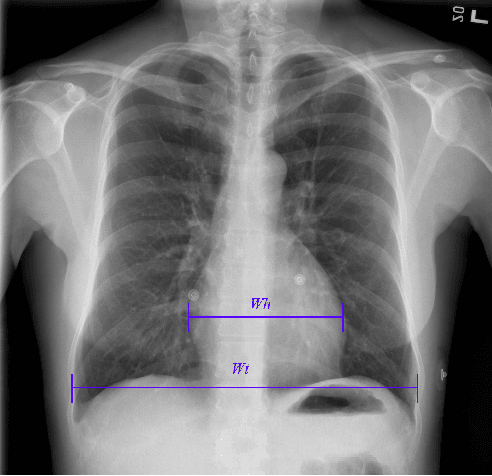

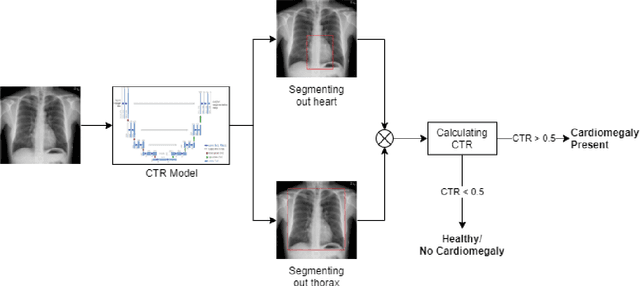
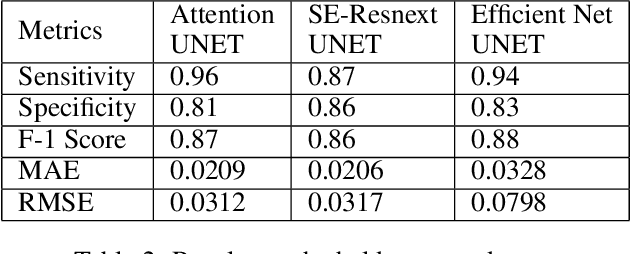
Abstract:We propose an automated method based on deep learning to compute the cardiothoracic ratio and detect the presence of cardiomegaly from chest radiographs. We develop two separate models to demarcate the heart and chest regions in an X-ray image using bounding boxes and use their outputs to calculate the cardiothoracic ratio. We obtain a sensitivity of 0.96 at a specificity of 0.81 with a mean absolute error of 0.0209 on a held-out test dataset and a sensitivity of 0.84 at a specificity of 0.97 with a mean absolute error of 0.018 on an independent dataset from a different hospital. We also compare three different segmentation model architectures for the proposed method and observe that Attention U-Net yields better results than SE-Resnext U-Net and EfficientNet U-Net. By providing a numeric measurement of the cardiothoracic ratio, we hope to mitigate human subjectivity arising out of visual assessment in the detection of cardiomegaly.
Comparison of Privacy-Preserving Distributed Deep Learning Methods in Healthcare
Dec 23, 2020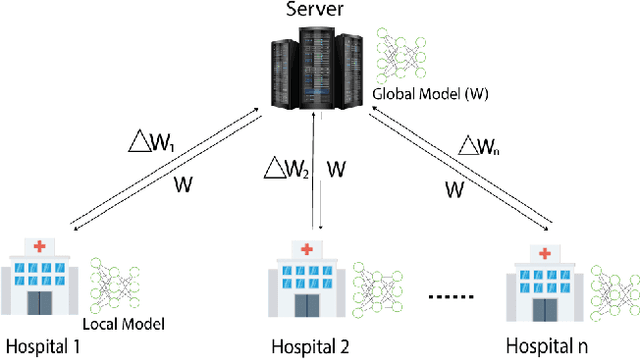

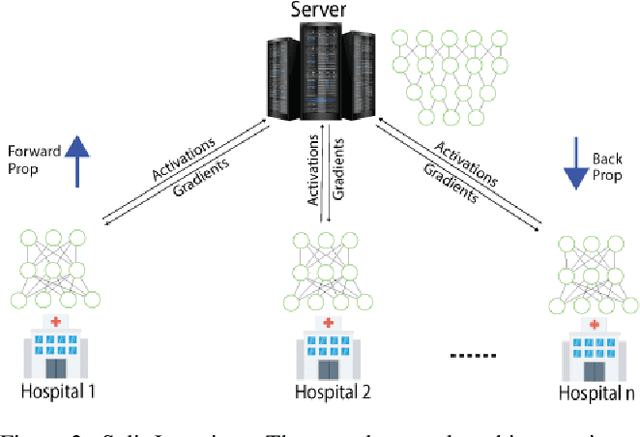
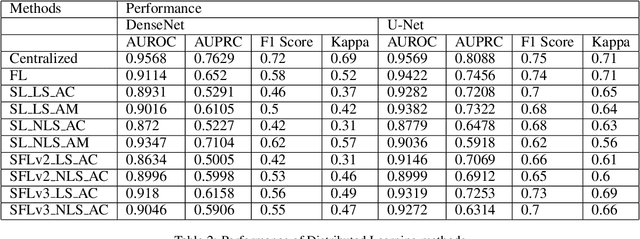
Abstract:In this paper, we compare three privacy-preserving distributed learning techniques: federated learning, split learning, and SplitFed. We use these techniques to develop binary classification models for detecting tuberculosis from chest X-rays and compare them in terms of classification performance, communication and computational costs, and training time. We propose a novel distributed learning architecture called SplitFedv3, which performs better than split learning and SplitFedv2 in our experiments. We also propose alternate mini-batch training, a new training technique for split learning, that performs better than alternate client training, where clients take turns to train a model.
 Add to Chrome
Add to Chrome Add to Firefox
Add to Firefox Add to Edge
Add to Edge